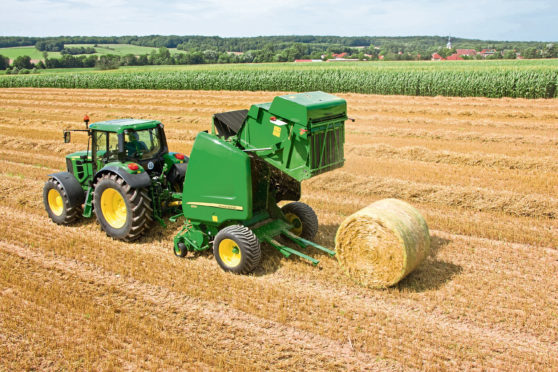Farmers and crofters have been told to be careful of VAT and legal pitfalls when selling second-hand farm machinery.
Farm accountancy firm Old Mill says selling surplus machinery is a good way to free up cash, but it usually comes with an increased tax bill and increased risks, especially when dealing with overseas buyers.
The company’s head of rural services, Andrew Vickery, said: “If you sell any equipment you will usually have to pay Income Tax or Corporation Tax on the sale price.
“Many people think that they are dealing with Capital Gains Tax instead, and can therefore make use of their CGT allowance – but that simply isn’t the case.”
He said sales of second hand machinery through Cheffins auctioneers had increased by 13% in the second quarter of this year to £10.07 million – its higest level since 2014.
However, the volume of machinery traded only increased by 3% and the higher prices were driven by favourable exchange rates for overseas buyers, stronger commodity prices and a lack of stock.
He said around 80% of stock sold at the Cheffins Cambridge machinery sales went overseas to buyers from countries including Ireland, Spain, Bulgaria, Poland and Belgium.
“If you’re selling overseas to a business you do not generally need to charge VAT,” said Mr Vickery.
“For EU sales, you must show the purchaser’s VAT number on your sales invoice and they pay VAT in their own country using the acquisition VAT process.
“You then need to log the sale on your VAT return, fill out an EC Sales List and send it in to HMRC. It is also vital that you retain a copy of the relevant freight documents for both EU or non-EU sales.”
Amy Kerr, senior associate at law firm Clarke Willmott, said it was important to understand the basic legal framework of the country you intend to export machinery to.
She said considerations include investigating who you are dealing with, and checking they have legal capacity to sign any contract. Contracts should include an accurate description of machinery, and farmers should consider whether the agreed price includes any sales taxes, customs duties, freight and insurance.
Ms Kerr added: “Payment up front is always best, with delivery once payment has cleared. Paypal is an option as this controls when payment is made. If you’re receiving a cash payment of 10,000 euros or more, you may need to register with HMRC and carry out money laundering checks.”
Mr Vickery said all these considerations were also relevant when trading within the UK.
He added: “There is strong trade in second hand machinery within the UK, as farmers join forces to buy new equipment while others look for cheaper options. While there will always be tax considerations when freeing up capital, it’s important to make the right commercial decisions for your business.”
